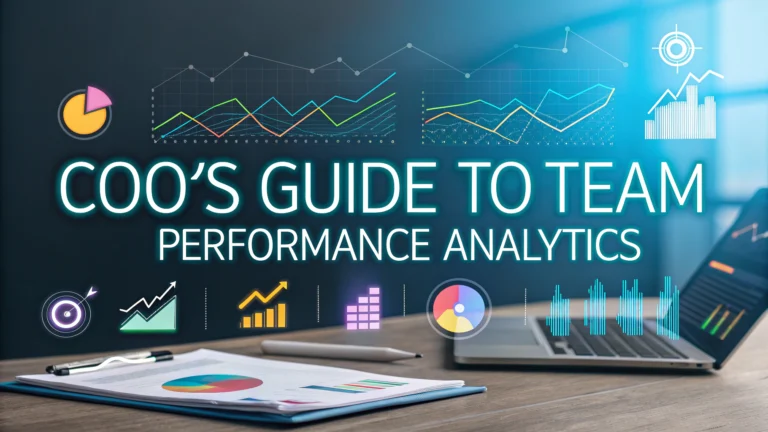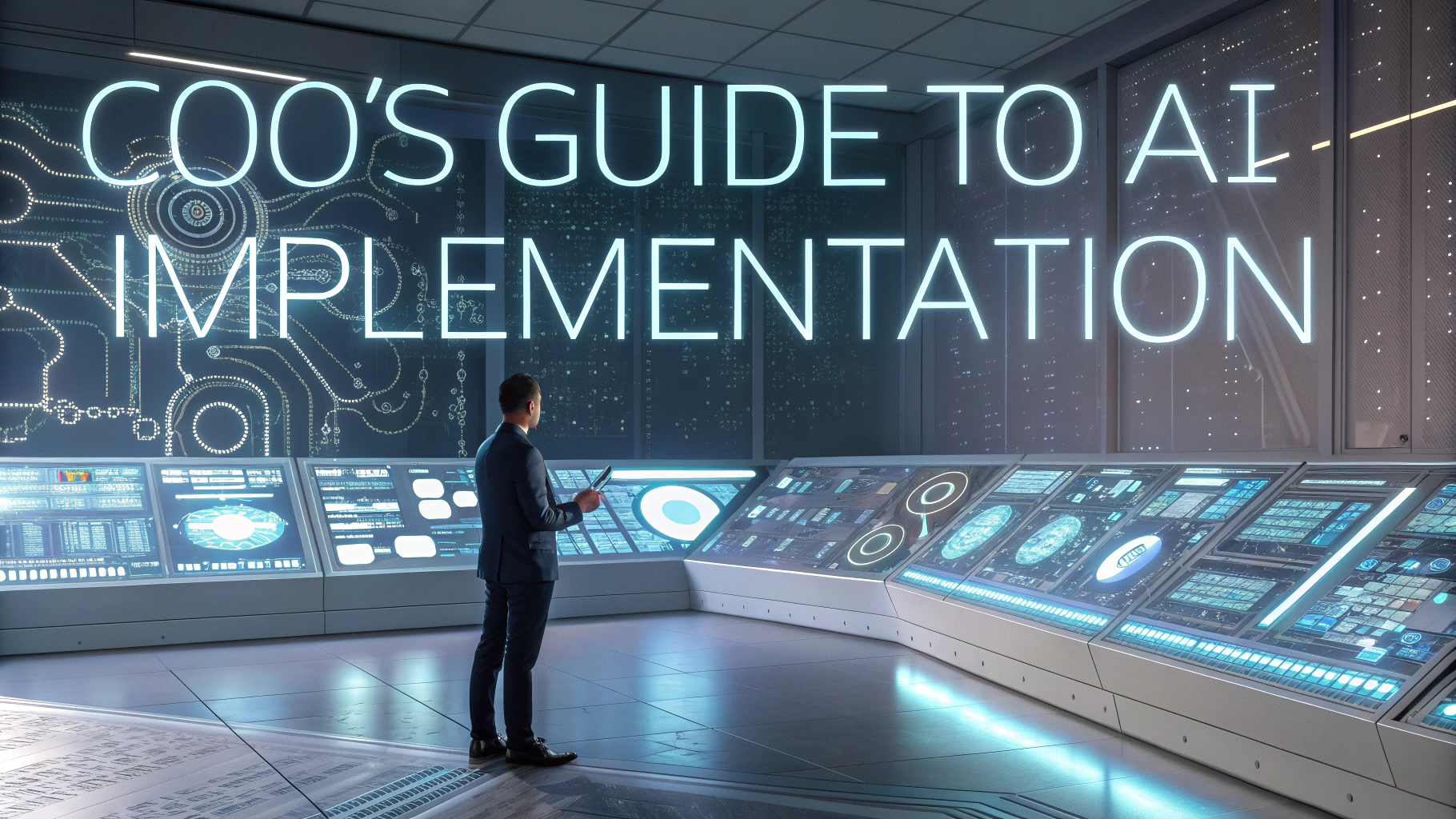Performance analytics help COOs drive operational excellence and make data-driven decisions that impact the bottom line.
This guide breaks down the key metrics, tools, and strategies COOs need to effectively measure and improve team performance.
We’ll explore practical approaches to implementing analytics systems while avoiding common pitfalls that can derail measurement efforts.
Key Performance Indicators for Teams
The most effective KPIs align with your organization’s strategic objectives and provide actionable insights.
- Productivity metrics (output per employee, time to complete tasks)
- Quality indicators (error rates, customer satisfaction scores)
- Efficiency measures (resource utilization, process cycle times)
- Financial metrics (revenue per employee, operating costs)
- Employee engagement scores (retention rates, satisfaction surveys)
Implementing Performance Measurement Systems
Start with a clear measurement framework that defines what success looks like for your teams.
- Select 3-5 core metrics that directly tie to business goals
- Establish baseline measurements before making changes
- Set realistic targets based on historical data and industry benchmarks
- Create regular reporting cycles (weekly, monthly, quarterly)
- Use visualization tools to make data accessible and actionable
Recommended Analytics Tools
| Tool Type | Popular Options | Best For |
|---|---|---|
| Business Intelligence | Tableau, Power BI | Data visualization and reporting |
| Project Management | Jira, Monday.com | Task and workflow tracking |
| HR Analytics | Workday, PeopleSoft | Employee performance tracking |
| Process Mining | Celonis, UiPath | Process optimization |
Taking Action on Performance Data
Data collection is only valuable when paired with consistent action and follow-through.
- Schedule regular performance reviews with team leaders
- Create action plans for addressing performance gaps
- Implement feedback loops to track improvement initiatives
- Share success stories and lessons learned across teams
- Adjust metrics and targets as business needs evolve
Common Performance Measurement Mistakes
Avoid these frequent pitfalls when implementing team performance analytics:
- Measuring too many metrics at once
- Focusing solely on lagging indicators
- Neglecting qualitative feedback
- Not accounting for external factors
- Failing to communicate measurement objectives clearly
Next Steps for Performance Excellence
Start by auditing your current performance measurement practices and identifying gaps in your analytics approach.
- Review existing KPIs and align them with current business objectives
- Evaluate your analytics tools and processes
- Train team leaders on performance data interpretation
- Create a roadmap for implementing new measurement systems
- Set up regular check-ins to monitor progress and adjust course
Contact [email protected] for more information about implementing performance measurement systems in your organization.
Advanced Performance Analytics Strategies
Organizations can elevate their performance measurement through sophisticated analytics approaches that drive deeper insights.
- Predictive analytics to forecast performance trends
- Machine learning for pattern recognition
- Real-time dashboards for immediate insights
- Cross-functional performance correlation
- Automated anomaly detection
Building a Data-Driven Culture
Success with performance analytics requires fostering an organizational mindset that embraces data-driven decision making.
- Regular training on data interpretation
- Transparent sharing of performance metrics
- Celebrating data-driven wins
- Encouraging experimentation with metrics
- Supporting continuous learning
Scaling Performance Measurement
Department-Level Implementation
- Customize metrics for different functions
- Align departmental goals with company objectives
- Create cross-functional performance dashboards
- Establish department-specific benchmarks
Enterprise-Wide Integration
- Standardize measurement approaches
- Implement unified reporting systems
- Ensure data consistency across units
- Develop global performance standards
Driving Sustainable Performance Excellence
Transform performance measurement into a cornerstone of organizational success through systematic implementation and continuous refinement.
- Regularly reassess and update performance frameworks
- Maintain focus on long-term strategic objectives
- Build sustainable measurement processes
- Invest in ongoing analytics capabilities
- Foster a culture of continuous improvement
FAQs
- What key performance indicators (KPIs) should a COO track for team performance?
Core KPIs include productivity rates, employee turnover, absenteeism rates, project completion times, quality metrics, customer satisfaction scores, revenue per employee, and operational efficiency ratios. - How frequently should team performance analytics be reviewed?
Performance analytics should be reviewed on multiple timelines: daily for operational metrics, weekly for team-level performance, monthly for departmental reviews, and quarterly for strategic analysis and trend identification. - What analytics tools are most effective for measuring team performance?
Leading tools include Tableau, Power BI, Workday Analytics, Oracle HR Analytics, and custom enterprise resource planning (ERP) systems that integrate multiple data sources for comprehensive performance tracking. - How can a COO effectively communicate performance metrics to different stakeholders?
Use role-specific dashboards, automated reports, visual data representations, and regular performance review meetings, tailoring the complexity and scope of data based on the audience’s needs. - What are the best practices for setting team performance benchmarks?
Establish industry-standard comparisons, use historical performance data, align benchmarks with company objectives, and ensure targets are SMART (Specific, Measurable, Achievable, Relevant, Time-bound). - How can performance analytics be used to identify and address team challenges?
Track trend patterns, conduct variance analysis, use predictive analytics to forecast potential issues, and implement early warning systems for performance degradation. - What role does data privacy play in team performance analytics?
Ensure compliance with data protection regulations (GDPR, CCPA), implement secure data handling protocols, and maintain employee privacy while collecting and analyzing performance data. - How can performance analytics be used to drive continuous improvement?
Implement feedback loops, conduct regular performance reviews, use A/B testing for process improvements, and develop action plans based on data insights. - What are the common pitfalls in implementing team performance analytics?
Over-reliance on quantitative metrics, neglecting qualitative feedback, insufficient data validation, lack of context in analysis, and poor communication of metrics to teams. - How should a COO align team performance metrics with company strategy?
Connect performance indicators to strategic objectives, cascade goals throughout the organization, and regularly review and adjust metrics to reflect changing business priorities.







